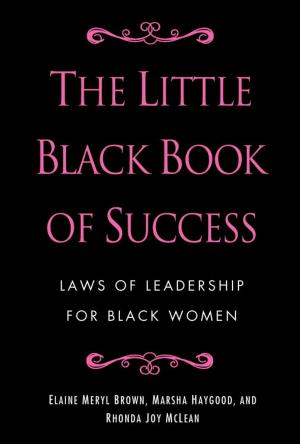Technology, Innovation and Entrepreneurship, Part II: My Firm
Business & Finance, Management & Leadership, Leadership| Author: | Patri K. Venuvinod | ISBN: | 9781458057099 |
| Publisher: | Patri K. Venuvinod | Publication: | April 8, 2011 |
| Imprint: | Smashwords Edition | Language: | English |
| Author: | Patri K. Venuvinod |
| ISBN: | 9781458057099 |
| Publisher: | Patri K. Venuvinod |
| Publication: | April 8, 2011 |
| Imprint: | Smashwords Edition |
| Language: | English |
Three insights concerning economic growth have become clear in recent times. Firstly, the key to economic growth is technology (T). Secondly, innovation (I) is the driver of technology growth. Finally, entrepreneurship (E) is a highly powerful but extremely underappreciated contributor to innovation. Yet there persists a paucity of academic books covering the large variety of issues impinging on TIE-exploitation from a contemporary viewpoint. This book is the third and final part of a textbook-trilogy that seeks to fill this gap.
Part I: My World, My Nation examined TIE interactions from a world-perspective but stressing nation building. Part II (this book) is titled My Firm as it discusses how an established firm could prosper in the contemporary world of globalized competition and technology. Part III: My Startup discusses issues of particular interest to the growing number of youth pursuing an entrepreneurial career.
The origins of this trilogy lie in the class notes compiled by the author while teaching 'Management of Technological Innovation' to undergraduate and graduate students from science, engineering and business departments. The final contents have been influenced strongly by the insights derived by him while living and working in India, the UK, Hong Kong (including extensive travels to mainland China), and the USA. Thus, rather than focusing just on the lessons to be learnt from the experiences of a developed country such as the USA (as most books on the themes examined do), this trilogy empathizes with the biases and concerns of the developing parts of the world as well.
Among the topics examined in this book (Part II) are diffusion of technology, industry dynamics, competition, competitive advantage, competitive forces, strategy development, research and development, R&D management, technology and market forecasting, organizational culture, and organizational structure.
Three insights concerning economic growth have become clear in recent times. Firstly, the key to economic growth is technology (T). Secondly, innovation (I) is the driver of technology growth. Finally, entrepreneurship (E) is a highly powerful but extremely underappreciated contributor to innovation. Yet there persists a paucity of academic books covering the large variety of issues impinging on TIE-exploitation from a contemporary viewpoint. This book is the third and final part of a textbook-trilogy that seeks to fill this gap.
Part I: My World, My Nation examined TIE interactions from a world-perspective but stressing nation building. Part II (this book) is titled My Firm as it discusses how an established firm could prosper in the contemporary world of globalized competition and technology. Part III: My Startup discusses issues of particular interest to the growing number of youth pursuing an entrepreneurial career.
The origins of this trilogy lie in the class notes compiled by the author while teaching 'Management of Technological Innovation' to undergraduate and graduate students from science, engineering and business departments. The final contents have been influenced strongly by the insights derived by him while living and working in India, the UK, Hong Kong (including extensive travels to mainland China), and the USA. Thus, rather than focusing just on the lessons to be learnt from the experiences of a developed country such as the USA (as most books on the themes examined do), this trilogy empathizes with the biases and concerns of the developing parts of the world as well.
Among the topics examined in this book (Part II) are diffusion of technology, industry dynamics, competition, competitive advantage, competitive forces, strategy development, research and development, R&D management, technology and market forecasting, organizational culture, and organizational structure.















